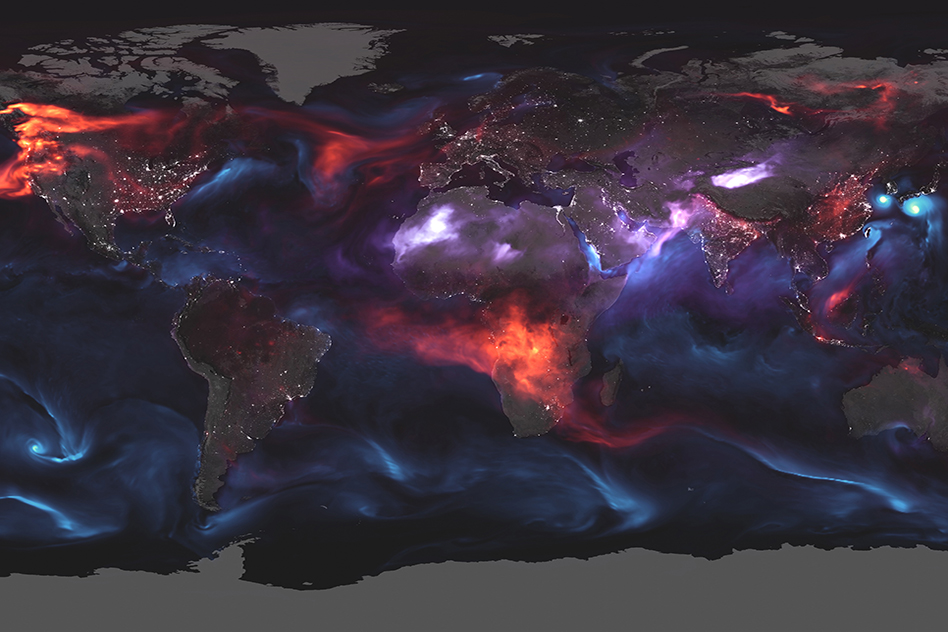
Airborne particulates, or aerosols, produced by coal-burning power plants and other human activities may help offset global warming, but they may also reduce rainfall in regions that are already water-stressed.
In a study appearing in the Journal of Climate in 2016, MIT researchers found that a high coal-use future—in which today’s emissions of sulfur dioxide (SO2) and black carbon aerosols from Asia’s industry, energy and domestic sectors are set to twice their year-2000 values from 2030 to 2100—would produce significant local and global climate impacts. The increased sulfate and carbonaceous aerosol levels would exert a large cooling effect throughout the Northern Hemisphere and particularly in South and East Asia, but also weaken several major monsoon systems, suppressing precipitation over vast land masses.
That study showed reductions in rainfall across much of Asia, especially East Asia (including China) and South Asia (including India), and a remote effect leading to a possible increase in rainfall in Australia as well as a decrease in rainfall in the Sahel region of Africa. Overall, higher aerosol levels would result in more reductions in rainfall than increases, particularly in regions that are already water-stressed.
Now, a new MIT study in Geophysical Research Letters that uses updated versions of the same global climate model (Community Earth System Model with the Community Atmosphere Model version 5.3) and covers a similar geographical area, but applies a far more rigorous statistical analysis of the results, has produced a slightly different conclusion. The researchers have found widespread cooling across the Northern Hemisphere and strong suppression of precipitation over East and Southeast Asia—just as in the previous study—but no clear evidence of remote effects on precipitation over Australia and West Africa.
“In this study we investigated the impact of present-day aerosol emissions from human activity in East and Southeast Asia. In agreement with our earlier study, the aerosol emissions reduce rainfall over the source region. However, differences with our earlier study highlight the importance of testing clearly defined hypotheses using appropriate statistical methods—as we have now sought to do,” says lead author Benjamin Grandey, a research affiliate in co-author MIT Joint Program Senior Research Scientist Chien Wang’s research group at the Singapore-MIT Alliance for Research and Technology.
Both studies were funded primarily by the National Research Foundation of Singapore through the Singapore–MIT Alliance for Research and Technology (SMART), with additional support from the U.S. National Science Foundation and Department of Energy (Office of Science).
Photo: Just another day on aerosol Earth (Source: NASA Earth Observatory images by Joshua Stevens, using GEOS data from the Global Modeling and Assimilation Office at NASA GSFC)

